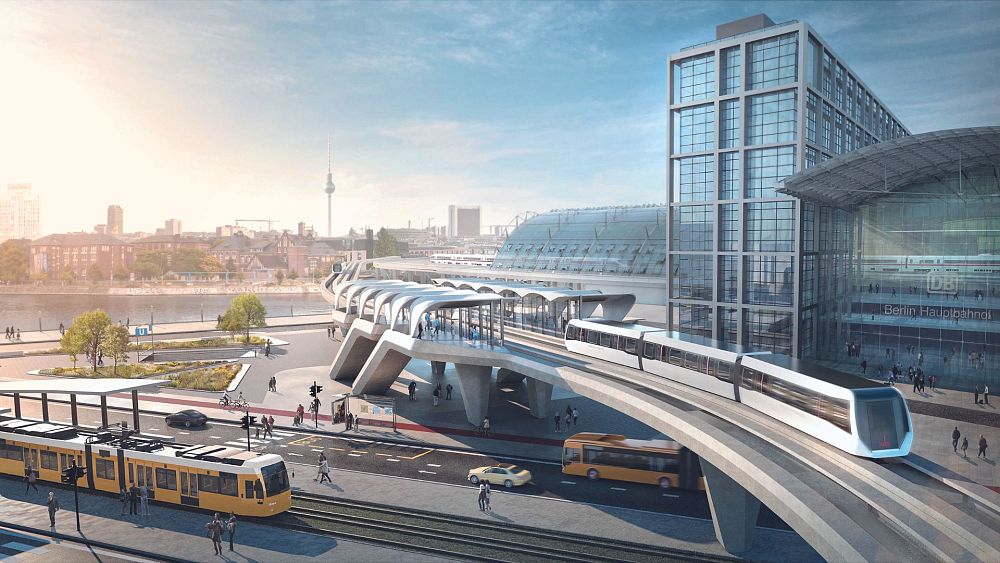Berlin is getting ready to welcome a futuristic ‘magnetic levitation train’.
The German capital plans to build a five-to-seven kilometre test track for the green transportation project, investing €80 million from a special climate fund.
The location of the monorail is yet to be decided but the city plans to build it in a place where it can be utilised following the testing phase.
Quicker and cheaper to build than a subway line, the driverless magnetic levitation - or ‘maglev’ - train could make its debut within two years.
It is hoped it will reduce car traffic and emissions in Berlin.
How would Berlin’s ‘magrail’ train work?
A step in the direction of the even more futuristic Hyperloop, magrail systems are based on magnetic levitation technology. This uses magnets to elevate a train off the track and another set of magnets to propel it along.
This removes the friction of the train touching the track, which increases speed and reduces noise.
Elsewhere in Europe, Polish company Nevomo has teamed up with Italian railway infrastructure manager Rete Ferroviaria Italiana to develop maglev technology that it hopes can be added to existing railway tracks.
If applied to high speed lines, Nevomo says it would be capable of doubling the top speeds of a French TGV train to 550 km/h.
German Transrapid technology, which consists of a high-speed monorail using magnetic levitation, is already in use in Shanghai, China. Opened in 2004, it now reaches speeds of 300 km/h. South Korea and Japan also have maglev trains.
Is this Berlin’s first magnetic rail?
The new maglev train is not Berlin’s first foray into magnetic rail. Operated experimentally in 1984 and for passengers between 1989 to 1991, the M-Bahn or Magnetbahn covered a 1.6 km line with three stops.
It was built in West Berlin to bridge a public transport gap created by the Berlin Wall. After the wall fell, the line became obsolete and was taken down to allow for the expansion of the underground.
Plans for the latest maglev train were announced by Dirk Stettner of the CDU parliamentary group, which governs Berlin in coalition with the SPD party.
The city aims to become climate neutral by 2045. It is unclear when maglev construction will begin.


